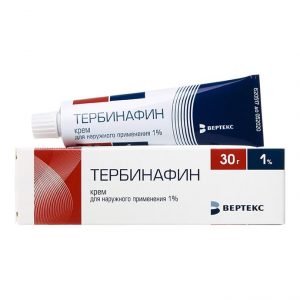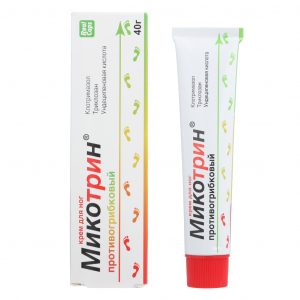Description
Release form
Concentrate for solution for infusion
Packaging
Bottle 20 ml.
Pharmacological action
Amfolip has a fungicidal and / or fungistatic effect depending on the concentration in biological fluids and the sensitivity of the pathogen. The mechanism of action of amphotericin B is based on its ability to bind to sterols (ergosterols) located in the cell membrane of the fungus sensitive to amphotericin B. As a result, the permeability of the membrane is disrupted, and intracellular components enter the extracellular space.
Active in vitro against most strains of Histoplasma capsulatum, Coccidioides immitis, Candida spp., Blastomyces dermatitidis, Rhodotorula, Cryptococcus neoformans, Sporothrix schenkii, Mucor mucedo, Aspergillus spp.
Distributed in most organs and tissues of the body, in cerebrospinal fluid is determined in an insignificant amount. Plasma protein binding is 90%. It is excreted by the kidneys, very slowly. 2-5% of the administered dose is excreted in active form. It can be detected in urine within 7 weeks after discontinuation of the drug.
Indications
treatment of severe systemic and / or deep mycoses in children (including premature infants with low birth weight) and adults, including:
Contraindications
hypersensitivity to amphotericin B and other components of the
drug severe hepatic and renal impairment
diseases of the hematopoietic system (anemia, agranulocytosis)
diabetes mellitus.
Use during pregnancy and lactation
The safety of the drug during pregnancy and lactation has not been established.
Use of the drug during pregnancy is only possible if the intended benefit to the mother outweighs the potential risk to the fetus. If necessary, the use of the drug during lactation should decide on the termination of breastfeeding.
Special instructions
The likelihood of toxic effects increases with prolonged treatment with Amfolip.
During the period of use of the drug, regular (at least 1 time per week) laboratory monitoring of renal, liver and hematopoietic function is necessary. With extreme caution, Amfolip should be prescribed to patients receiving nephrotoxic drugs at the same time.
When prescribing the drug to patients with diabetes mellitus, it should be borne in mind that in 1 vial of Ampholip contains about 900 mg of sucrose.
Introduction of Ampholip to patients on hemodialysis is possible only after completion of the dialysis procedure.
When prescribing Amfolip to patients taking potassium preparations, it is necessary to carefully monitor the level of potassium and magnesium in the blood plasma.
Back pain, periodically appearing with iv administration, disappears after the end of the infusion or with a decrease in the injection rate and usually does not occur again.
Despite the fact that during the period of treatment with Amfolip there were no significant changes in the blood coagulation system, it must be borne in mind that when using Amfolip in the usual dosage form, hemolysis may occur.
When using IV systems previously established for other purposes, flush the system with 5% glucose for injection. If this is not possible, then Ampholip should be administered through a separate system.
Dosage and administration of
iv, drip for 30-60 minutes. If adverse reactions occur, the infusion time should be increased to 90 120 minutes. The recommended concentration of the active substance is 1 mg / ml. The average course dose of the drug is 1-3 g and is achieved within 2-4 weeks.
With systemic mycoses, treatment usually begins with a dose of 1 mg / kg / day, which, if necessary, is gradually increased to 3 mg / kg / day, in some cases up to 5 mg / kg / day.
For the prevention of invasive fungal diseases during transplantation of parenchymal organs, Ampholip is prescribed within 5 days after transplantation at a dose of 1 mg / kg / day.
In patients with HIV infection complicated by disseminated cryptococcosis, the drug is prescribed in a daily dose of 3 mg / kg for 42 days. After completing the main course, longer maintenance therapy may be necessary due to the risk of recurrence of infection.
In the treatment of visceral leishmaniasis, Amfolip is used at a dose of 1-1.5 mg / kg / day for 21 days or 3 mg / kg / day for 10 days. In patients with immunodeficiency, a dose of 1 1 can also be used, 5 mg / kg / day for 21 days, but after the end of the main course due to the risk of recurrence of infection, maintenance therapy or repeated courses of treatment may be necessary.
For the prevention of invasive fungal infections in patients with neutropenia caused by chemotherapy or the use of high doses of corticosteroids, the drug is prescribed at a dose of 2 mg / kg / day until the level of neutrophils is restored to 0.5 · 109 / l.
For children, the drug is prescribed in doses comparable to those used in adults, based on 1 kg of body weight.
Dosage adjustment is not required when prescribing the drug to elderly patients.
Method for the preparation of
infusion solution. Immediately before use, the drug should be stored for 1-2 hours at room temperature.
To obtain an infusion solution, the vial must be shaken thoroughly – until the sediment disappears and added to a 5% dextrose solution for intravenous use. The ready-to-use infusion solution should have a concentration of 1 mg / ml.
Side effects of
From the gastrointestinal tract and liver: nausea, vomiting (less than 3%) increased activity of liver enzymes. As a rule, impaired liver function indicators do not progress with an increase in the dose of the drug. In patients after liver transplantation, a significant increase in the level of alkaline phosphatase is possible.
From the urinary system: there are reports of a transient decrease in renal function, including increased serum creatinine concentration, azotemia, hypokalemia, acidosis.
Other: rarely – fever, chills, headaches. There are reports of pain in the back and chest, in rare cases – severe. A characteristic symptom is the occurrence of pain in the lower back a few minutes after the start of the infusion.
Drug interaction
Increases the effectiveness and toxicity of anticoagulants, theophylline nitrofurans and sulfonylureas (prolongs the half-life) reduces the effectiveness of ethinyl estradiol (risk of breakthrough bleeding).
Inhibitors of microsomal oxidation in the liver (including cimetidine, non-narcotic analgesics, antidepressants) slow down the metabolic rate, increase the concentration in the blood serum (increased toxicity). Inducers of microsomal oxidation in the liver (including phenytoin, rifampicin, barbiturates, carbamazepine) accelerate liver biotransformation (decreased effectiveness).
With the simultaneous use of Amfolip with flucytosine, it should be borne in mind that Ampholip can enhance the toxic effect of flucytosine by increasing cell uptake and reducing renal excretion.
Pharmaceutical Interaction
Ampholip is incompatible with heparin, physiological, and other solutions containing electrolytes. The drug should not be mixed with other drugs. The presence of bacteriostatic additives (including benzyl alcohol) can lead to precipitation of the drug.
Overdose
Treatment: In case of overdose, immediately discontinue the drug and carefully monitor kidney function.
Storage Conditions
In a dark place, at 2 – 8 ° C (do not freeze).
Shelf life
2 years.
Deystvuyushtee substance
Amphotericin B lipidn y complex
dosage form
infusion solution
Prescription
Prescribed
For adults prescribed by a doctor, Children prescribed by a doctor, Pregnant as prescribed by a doctor
Bharat Sirams & Waxins Limited, India




